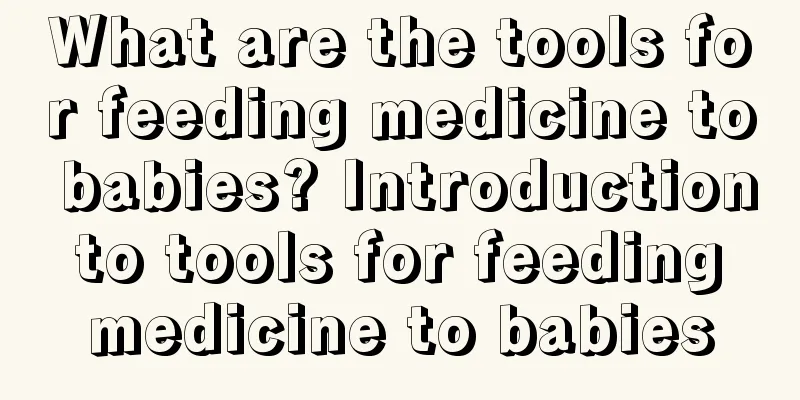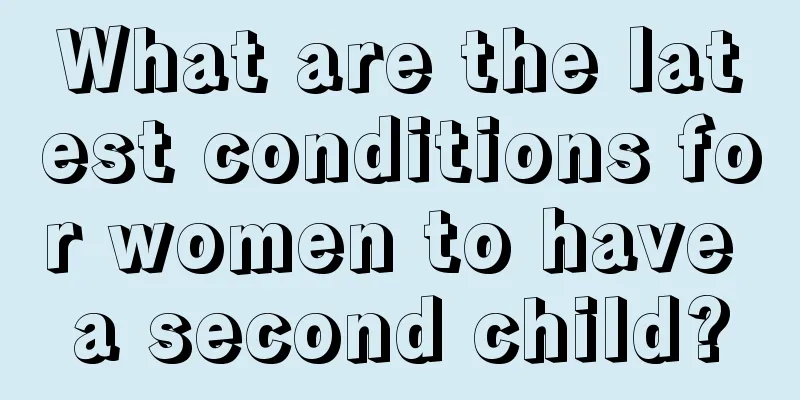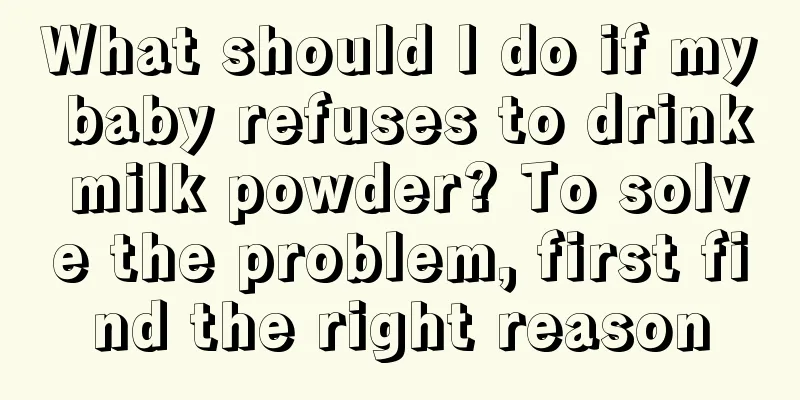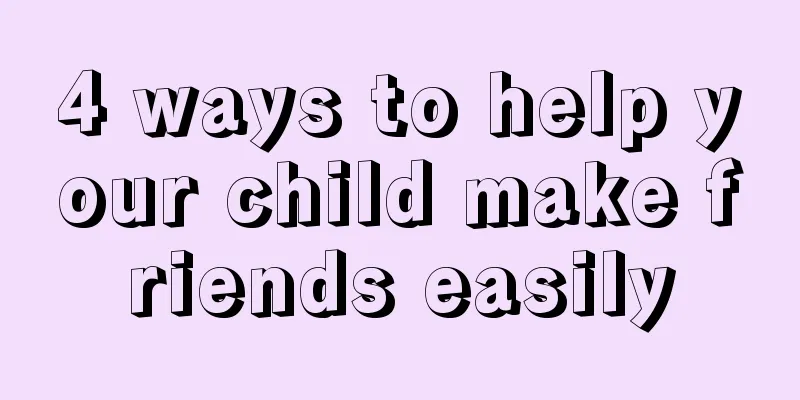What are the tools for feeding medicine to babies? Introduction to tools for feeding medicine to babies

|
The baby is too young, so taking medicine has become a problem. How to solve the problem of the baby refusing to take medicine? Today, I will introduce to you in detail which tools are there to help babies take medicine. Please see the following inventory of medicine feeding tools, so that it is not a problem for babies to take medicine. What are the tools for feeding medicine to babies?Medicine spoon Features: Regular children's medicine spoons are made of non-toxic materials, more suitable for the size of the baby's mouth, safe and hygienic to use. Tips: Pour the measured dose of medicine into the medicine spoon. If the medicine is in powder form, you can mix it with water to make it easier for your baby to drink. Then hold your baby so that he cannot twist. Then pick up the medicine spoon and place it on his lower lip, so that he can suck the medicine into his mouth. Medicine dropper Features: Professional dropper design, clear scale, can control the dosage more accurately. Tips: Put the measured dose into the medicine spoon, then draw a portion of the medicine into the dropper. Then put the dropper into the baby's mouth and squeeze the medicine in. Do this again and again until all the medicine is gone. Do not use the medicine dropper to feed medicine to babies under 6 months old, as it may cause suffocation. If the baby has teeth, it is best to use a plastic straw instead. Syringe type medicine feeder Features: Generally made of food-grade PC raw materials. The design of the syringe-type medicine feeder conforms to the baby's oral structure and can spray the medicine directly into the esophagus to fully exert the efficacy and achieve the best effect. Usage tips: Use a syringe to draw out the dissolved medicine, and pay attention to the temperature and concentration of the medicine. Place the syringe on the inside of the child's mouth and drip slowly. The medicine will flow into the pharynx along the cheek. A few children will cry because of the bitter taste. Pat their face lightly and they will swallow. When feeding medicine to babies, be careful not to force the medicine down the nose, as this can cause the medicine to enter the trachea easily. It is also not advisable to pour the medicine directly into the pharynx, so as to avoid inhaling the medicine into the trachea and causing choking and coughing, or even aspiration pneumonia. If the child chokes and coughs when taking the medicine, stop feeding immediately, pick up the child and pat his back gently. Choking the medicine into the trachea can easily cause lung infection or suffocation and death due to tracheal obstruction. Introduction of medicine feeding toolThe following tools can quickly give your baby medicine Feeding medicine with a spoon Steps for feeding medicine: ● Measure the dosage of the medicine first, and pour a small portion into a small spoon; ● Then hold the baby still; ● Press the spoon on his lower lip and let him suck the medicine into his mouth; ● Feed the baby the rest in small amounts and multiple times using the same method. Editor's Tip: When using this method, the baby will easily spit out the medicine if he resists, so you'd better take the medicine before feeding him. It's best not to feed him a large dose at once, but feed him drop by drop, and comfort him while feeding. When feeding medicine, parents should be calm. If you are very nervous and uneasy, this emotion will also infect the baby. Giving medicine with a dropper Steps for feeding medicine: ● For babies under 1 year old, you can let them lie in a chair first; ● Lift their upper body slightly; ● Then use a syringe or dropper to squeeze the medicine into the baby's mouth; ● Be careful to squeeze the medicine between the tongue and cheek, not near the throat, otherwise the baby will choke easily; ● Then gently pinch his cheeks to help the baby swallow the medicine; ● Experts explain that when the baby feels liquid in the back of his throat, he will swallow it quickly; ● After the baby has taken the medicine, stand the baby up again; ● Pat his back to help him swallow the medicine, and feed him some warm water, which can quickly remove the residual medicine taste in the mouth and avoid vomiting. Editor's Tip: When using a dropper, the medicine will not pass through the tongue, making it easier for the baby to accept and difficult for the baby to spit out. When the medicine goes in, gently blow air on the baby's face, and the baby will swallow it reflexively. Give medicine with a medicine feeder Steps for feeding medicine: ● Disinfect the medicine feeding tools first, and brew them with boiling water for 3 to 5 minutes; ● If there is powder or tablet medicine, you need to dissolve the medicine into liquid with warm water first; ● Follow the instructions and put the exact amount of medicine into the medicine feeder; ● Hold the baby in the elbow with his head slightly raised. Parents can first fix the baby's head and hands with their hands, and then put the medicine feeder into the baby's mouth and slowly inject it, or guide him to suck and drink it; ● As the medicine enters the mouth, you can gently blow on the baby's face. The baby will have a swallowing reflex, which will help swallow the medicine. Editor's note: Many mothers feel that it is the most difficult to feed medicine to babies aged 6 months to 2 years old. They are not as "well-behaved" as when they were young, but they are not old enough to be reasoned with or persuaded to take medicine, so they often use medicine feeding tools to feed medicine. When using it, be sure not to be too impatient. Babies swallow very slowly, and they may cry and be reluctant. At this time, the push must be slow, otherwise the baby may spit out the medicine due to untimely swallowing, or cause choking and coughing. Tips for feeding medicine to your baby1. Prepare your child's favorite drink and let him drink it after taking the medicine to remove the smell of the medicine. You should also try to give your child some small rewards, I believe it will work. Tell your child that he can pinch his nose when taking medicine so that he can't smell the medicine, but never force him to take it. 2. If the child is old enough to understand, explain to him why he is taking medicine. After he understands, he will feel better and will be more willing to take the medicine. 3. When feeding medicine, pour it on the back half of his tongue, because the taste buds are all on the front half of the tongue, so he will not feel that the taste of the medicine is too strong. 4. Parents should also be reminded to clean their children's teeth after taking medicine, because many medicines for children contain sugar. If your child needs to take medicine for a long time, you can ask the doctor to prescribe some sugar-free substitutes. |
Recommend
Do I need to change the brand of baby rice cereal? Do I need to mix baby rice cereal with milk powder?
Usually babies under 1 year old eat milk powder a...
What should I do if my baby has diarrhea in autumn? What are the causes of diarrhea in babies in autumn?
What should we do if our baby has diarrhea in aut...
The breastfeeding journey of a new dairy cow mother
As a young "little cow mom" who is only...
At what age can children eat salt? Precautions for children to eat salt
At what age can children eat salt? When the baby ...
Why do children have to learn dancing?
It is very important to let children keep the hab...
Can I eat hawthorn before giving birth? What can I eat before giving birth to help with a smooth birth?
Hawthorn is a fruit that pregnant mothers should ...
What are the signs of labor? How to relieve pain during labor?
Many expectant mothers are very nervous before gi...
How is the quality of Vinda tissue paper? Can Vinda tissue paper be thrown down the toilet?
Vinda tissue is a common tissue brand in our dail...
The difference between foremilk and hindmilk cannot be ignored
Many new mothers will find that when breastfeedin...
How to give birth to a son What are the secrets and techniques for giving birth to a boy
Nowadays, many families want to have a boy. Altho...
What are the risks of IVF? What are the disadvantages of IVF when it grows up?
Although IVF can help couples who cannot conceive...
Why are children too thin? How can children gain weight?
Usually, children's stomachs are very small, ...
Can pregnancy test sticks go wrong? The chance is relatively small
Many people think that pregnancy test sticks are ...
What is the cause of hematuria in children and how to treat it
Hematuria in children is one of the common diseas...
How much weight can the waist stool be used for the baby? Can the waist stool be washed in a washing machine?
Most mothers will use a waist stool when they tak...









